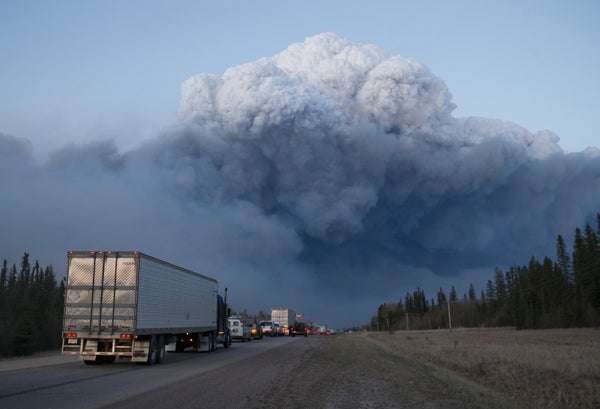On supporting science journalism
If you're enjoying this article, consider supporting our award-winning journalism by subscribing. By purchasing a subscription you are helping to ensure the future of impactful stories about the discoveries and ideas shaping our world today.
The intense wildfire that has forced thousands of people to evacuate Fort McMurray and surrounding areas in Alberta arrived early in the wildfire season, fueled by hot, windy weather. Scientists say big fires will ignite sooner and sooner in the year in the western U.S. and Canada as the snow pack continues to dwindle during warmer winters or dries out sooner during warmer springs, leaving terrain parched for more weeks of the year. In the American West a 1-degree Celsius rise in average temperature could increase the annual acreage burned by up to 600 percent in certain regions. See the map below for details.

Sources: University of Washington; U.S. Forest Service
Graphic by Bryan Christie
This map was first posted online May 17, 2011.
